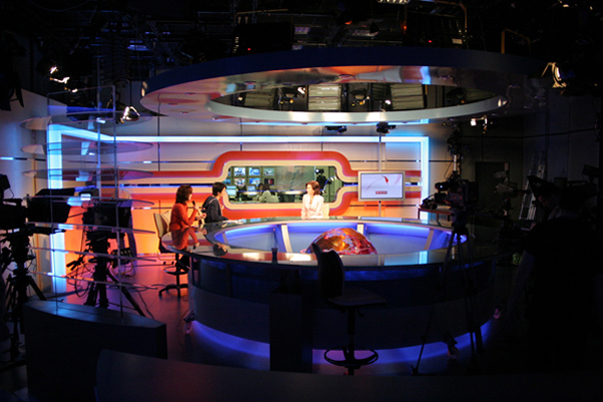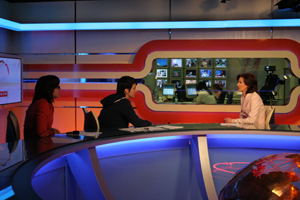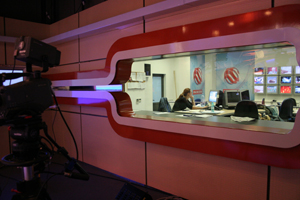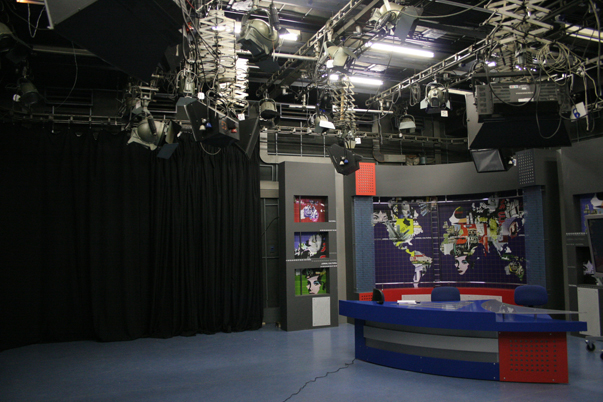| Katya Sander | e@katyasander.net |
| Televised I: the Anchor, the I, and the Studio 2006 Multi-channel video What is a news-studio? What kind of speech becomes possible from this space – and what kind of subject? What does it mean to “anchor” the news? How to ask this question to a news anchor? That is, how to get a news anchor to speak about her/his own position in the news? It is from this problem that Televised 1: the Anchor, the I, and the Studio departs.
Do you use the word “I” when you are on screen? Beginning with this question, each news anchor is engaged in a conversation about their own role in the news they present — whether they see themselves as a part of or apart from this news, as in the story or outside of it. If outside of it, then where exactly is this outside located? Where is the “I” located? In so-called everyday speech, one tends to use “I” quite often. This is not, however, the case with most news anchors who will in general refrain from using this little pronoun. This is enough to suggest that the speech situation of the anchor is something other than everyday speech. Yet, generally speaking, the news anchor appears on television everyday, typically at the same time and of course in the same place. What exactly is this place of the anchor that allows her/him to engage in such a special kind of everyday speech? We all know that the news anchor reports from a news studio. But what exactly is this thing that we call a news studio. Why is it necessary? What does it allow to be said? What does it allow to be seen? And perhaps more importantly, what kinds of relations does it allow to be established between what is seen and what is said? If the utterance of “I” is avoided by news anchors, then what comes to stand in place of this utterance? What relates the seen to the said if not “I”?
|



